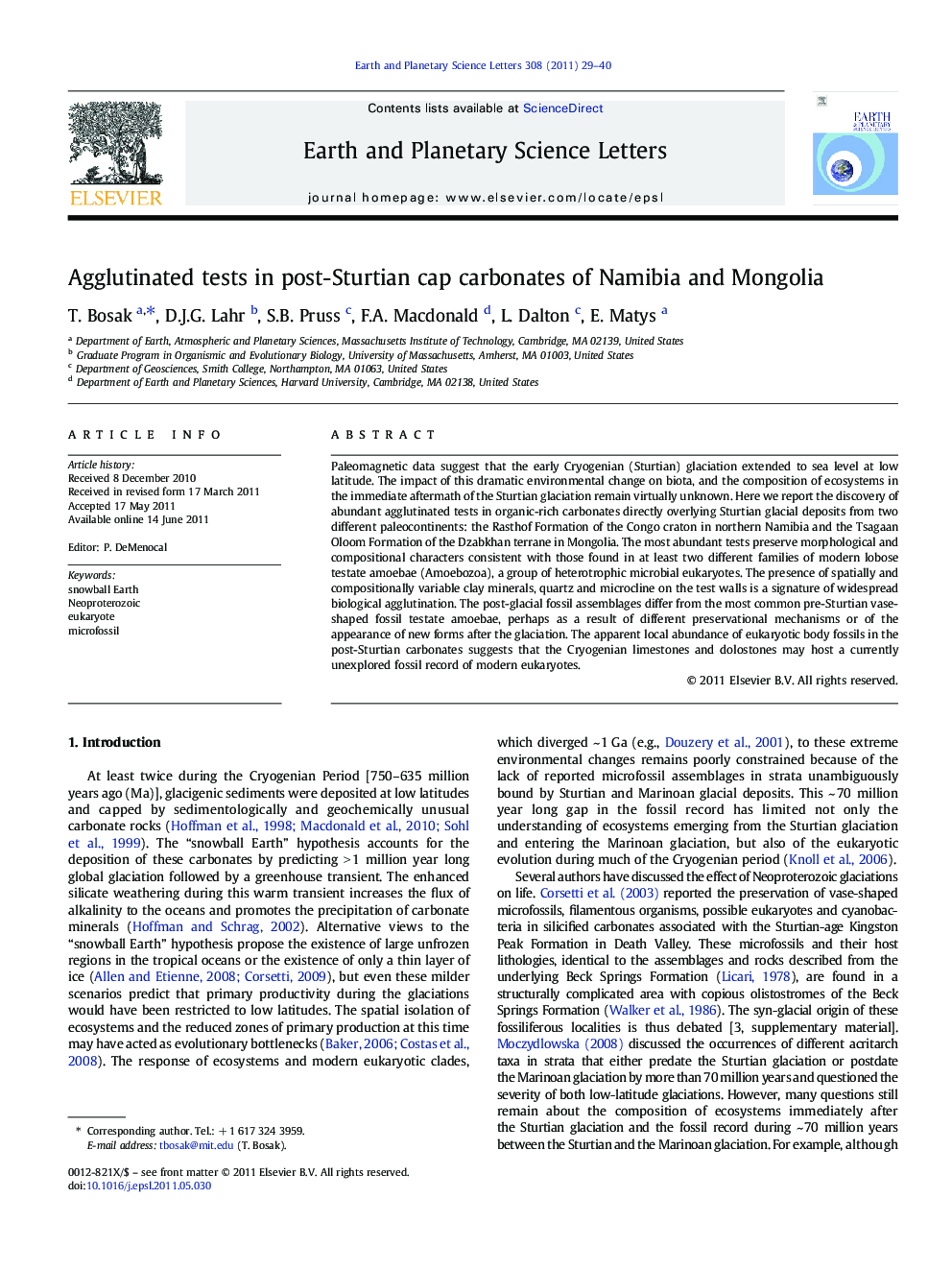| کد مقاله | کد نشریه | سال انتشار | مقاله انگلیسی | نسخه تمام متن |
|---|---|---|---|---|
| 4678031 | 1634824 | 2011 | 12 صفحه PDF | دانلود رایگان |

Paleomagnetic data suggest that the early Cryogenian (Sturtian) glaciation extended to sea level at low latitude. The impact of this dramatic environmental change on biota, and the composition of ecosystems in the immediate aftermath of the Sturtian glaciation remain virtually unknown. Here we report the discovery of abundant agglutinated tests in organic-rich carbonates directly overlying Sturtian glacial deposits from two different paleocontinents: the Rasthof Formation of the Congo craton in northern Namibia and the Tsagaan Oloom Formation of the Dzabkhan terrane in Mongolia. The most abundant tests preserve morphological and compositional characters consistent with those found in at least two different families of modern lobose testate amoebae (Amoebozoa), a group of heterotrophic microbial eukaryotes. The presence of spatially and compositionally variable clay minerals, quartz and microcline on the test walls is a signature of widespread biological agglutination. The post-glacial fossil assemblages differ from the most common pre-Sturtian vase-shaped fossil testate amoebae, perhaps as a result of different preservational mechanisms or of the appearance of new forms after the glaciation. The apparent local abundance of eukaryotic body fossils in the post-Sturtian carbonates suggests that the Cryogenian limestones and dolostones may host a currently unexplored fossil record of modern eukaryotes.
Research highlights
► Eukaryotic survival of the Sturtian glaciation.
► Fossil record between 716 and 635 Main carbonate strata.
► Sturtian cap carbonates from Namibia and Mongolia contain many agglutinated tests.
► Pre-glacial and post-glacial assemblages are different.
► Agglutinated eukaryotes abundant in subtidal ecosystems after the Sturtian glaciation.
Journal: Earth and Planetary Science Letters - Volume 308, Issues 1–2, 1 August 2011, Pages 29–40